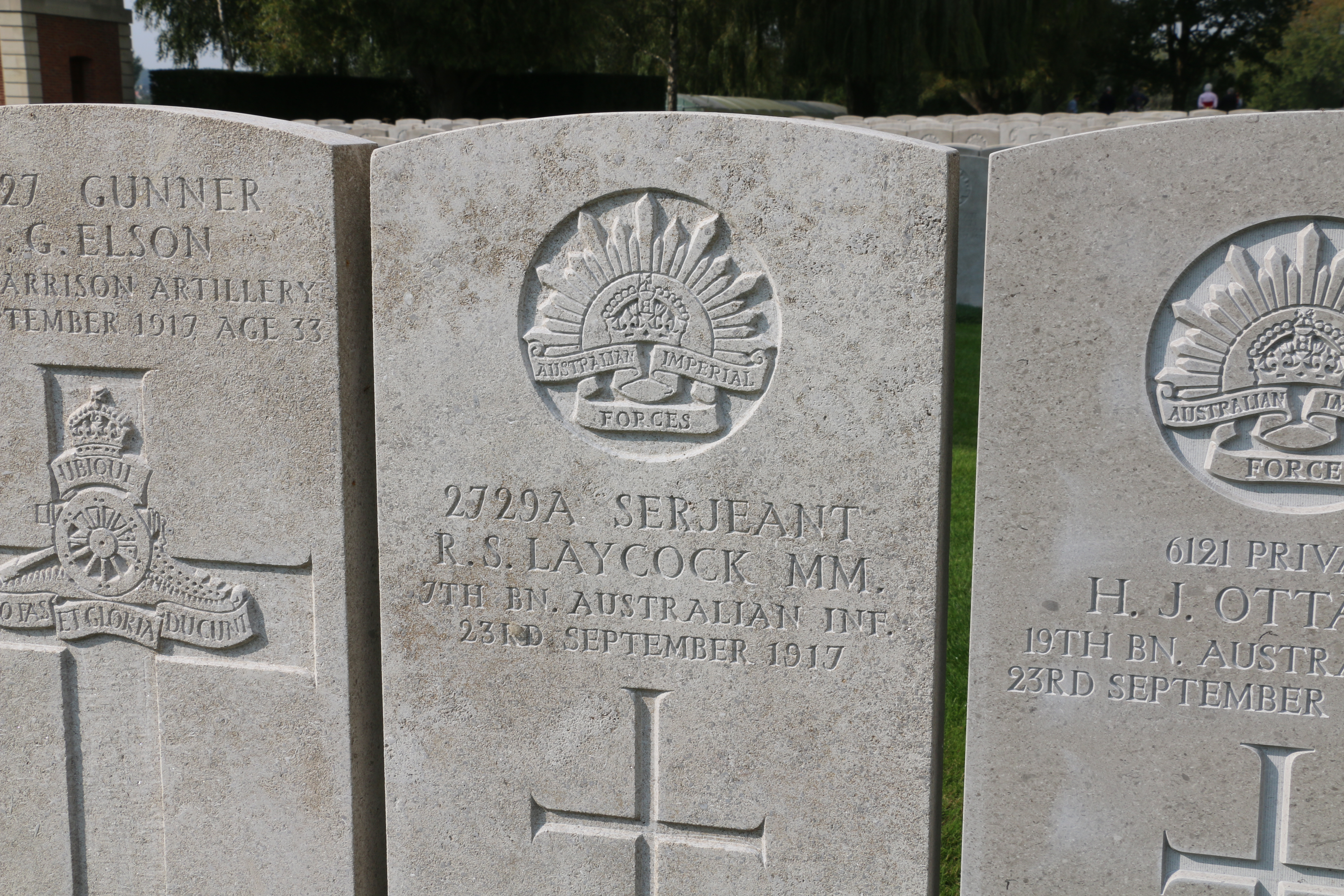The first Military Medal awarded to a Dimboola lad was recommended at the end of February 1917 for brave action near the northern French town of Flers.
Raymond Stanley Laycock, the son of the Dimboola Postmaster, received this award for action for Great courage and initiative in leading sections of Co. and placing M.G. crews. (24-26 February 1917 near Flers.).’
Born in Beechworth and educated in Bendigo, Laycock’s family moved around for his father’s employment, and they were in Dimboola at the time of the First World War. Although he was working as a clerk with the Department of Agriculture in Melbourne in 1915, he was considered a Dimboola local.
Despite his small stature, standing only five foot two inches tall, and having previous military experience serving in the Cadets for four years, he was eager to enlist but was not deterred when his first application in April 1915, when he turned 18, was rejected as he sought out lessons in physical development to enhance his chances of being accepted.
Upon being rejected for a second time, referencing his determination and height, a stalwart non-commissioned officer, jokingly suggested that he might ‘crawl into a cartridge case, get himself stowed away, and reach the front by that means.’
A third application proved successful due to the minimum height requirements being lowered, and he enlisted on 16 July 1915. After only being in camp a few weeks before, he boarded the SS Makarini on 15 September 1915, bound for the battlefields of Europe.
Soon after arriving in Egypt, Laycock’s 5th Battalion was sent to Gallipoli, where they served for two weeks before the evacuation in December.
Upon their return to Egypt, the AIF underwent expansion, with experienced members from existing battalions transferred to form the nucleus of several newly formed ones, and Laycock found himself in the 57th Battalion.
In April 1916, as it departed for the Western Front, he was transferred to the 7th Battalion.
Over the next two and a half years, this Battalion served in the Battle of Pozieres in July 1916, after which they spent time over the next two years seeing action in both the Somme sector in France and the Ypres area in Belgium.
Laycock was promoted to Lance-Corporal in August 1916 and had risen to the rank of Corporal by the end of the year. Then, in March 1917, he was promoted to Sergeant for gallantry in the field between February 24 and 26 during action near Flers in France, for which he was awarded his Military Medal.
The Battalion’s next significant engagement was during the Third Battle of Ypres, where during fighting along the Menin Road on 20 September, Laycock was admitted to the 3rd Canadian Casualty Clearing station with what was noted as a dangerous gunshot wound to his abdomen.
He died of his wounds three days later and was buried in the Lijssenthoek Military Cemetery, twelve kilometres west of Ypres. (pictured above)
His parents back in Dimboola had been notified of his injury, so the news of his passing was not unexpected.
Flags in Dimboola and his hometown of Beechworth were flown at half-mast as a tribute to his memory.
Raymond’s brother, William Thomas Laycock, served as a Sapper with Divisional Signal Company 3/39th Battalion after enlisting on 23 December 1915 and returned to Australia on 22 July 1917 after being declared no longer fit for active service due to wounds.
Following his death, the Victorian Minister for Agriculture paid the following tribute to Laycock.
VICTORIAN GIVES LIFE
MINISTER PAYS TRIBUTE
With deep regret the staff of the Agricultural Department has received official news that Sergeant Raymond S. Laycock, a former brother officer, has died of gunshot wounds sustained near Polygon Wood, France, on 21 September.
“Victoria has sent no braver man to the front,” said Mr F. Hagelthorn, Minister for Agriculture today.
“Packed away in that little form of his was the heart of a giant, and us much grit as would serve a platoon of soldiers. He was only a bantam, scarcely 5ft. 2in. Twice he was rejected. After the first unsuccessful attempt to pass, he took physical culture lessons to try to satisfy the requirements of the recruiting authorities. When he was coming away subsequent to his rejection the second time, he was looking dejected, and a stalwart Sergeant-Major suggested to him that If he wanted to go to the front very badly lie should crawl into a cartridge case and stow away.
Indignant at this jocularity, Laycock was more determined than ever to earn the right to don khaki. When the height was reduced to 5ft. 2in. he was accepted, and in his 19th year, he was serving on Gallipoli. From early in 1916, he was in France. From July to November, he went through the Somme offensive, and after Pozieres, he was made a corporal.
“For bravery displayed In tho Bapaume advance, In March last, he was promoted Sergeant on the field and awarded the Military Medal. Now he has made the supreme sacrifice when sharing in the glorious triumphs which are crowning tho efforts of the British on the west front.
“So this little junior clerk of the Victorian Agricultural Department, a youth of 20, has shown his countrymen what a big man he really was, and we, his colleagues, mourn him deeply, and sympathise with his family, whose consolation, to use his father’s words is, that he had a long run as a soldier, and was of some service to his homeland.”
- The Herald - Sat 13 Oct 1917 
|






